
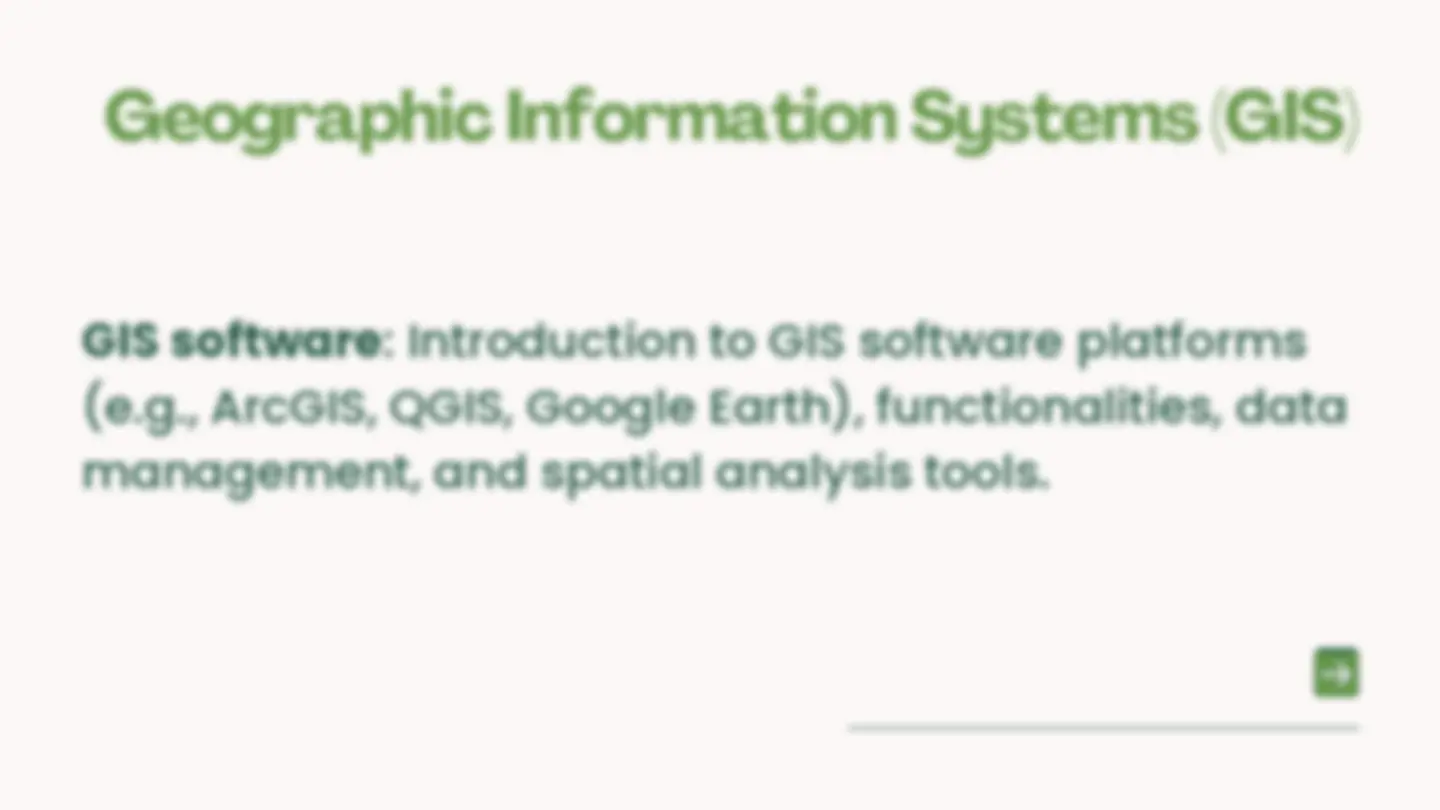
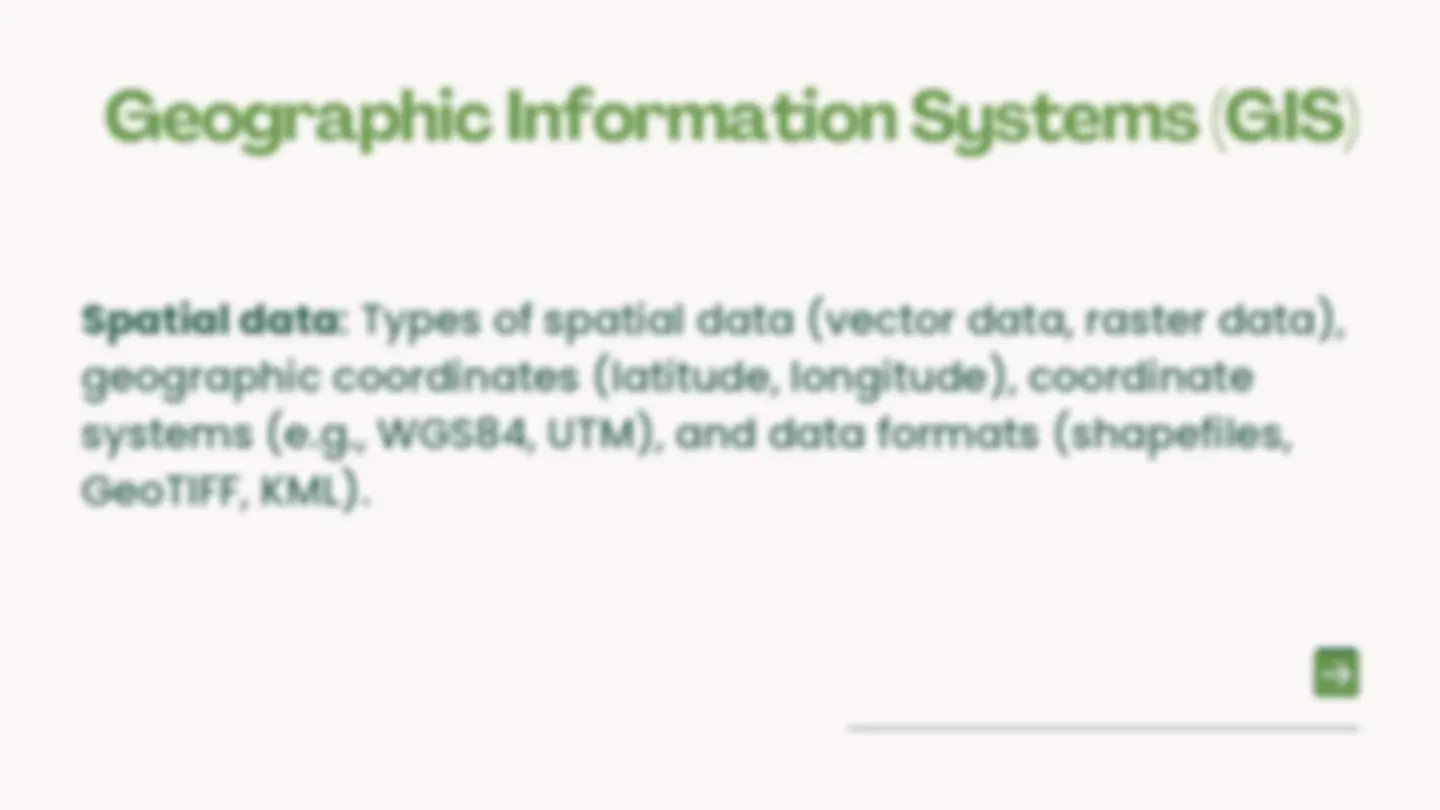
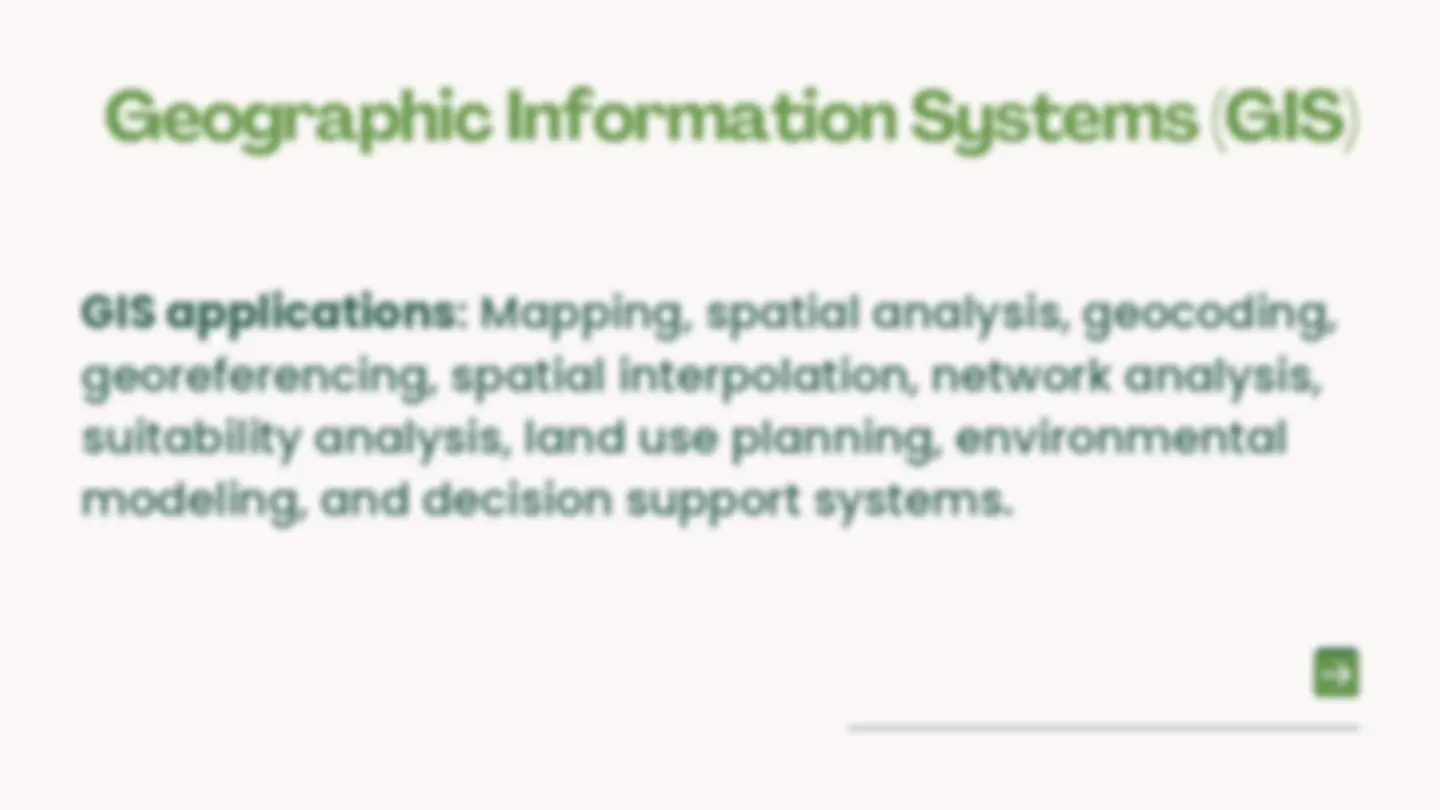
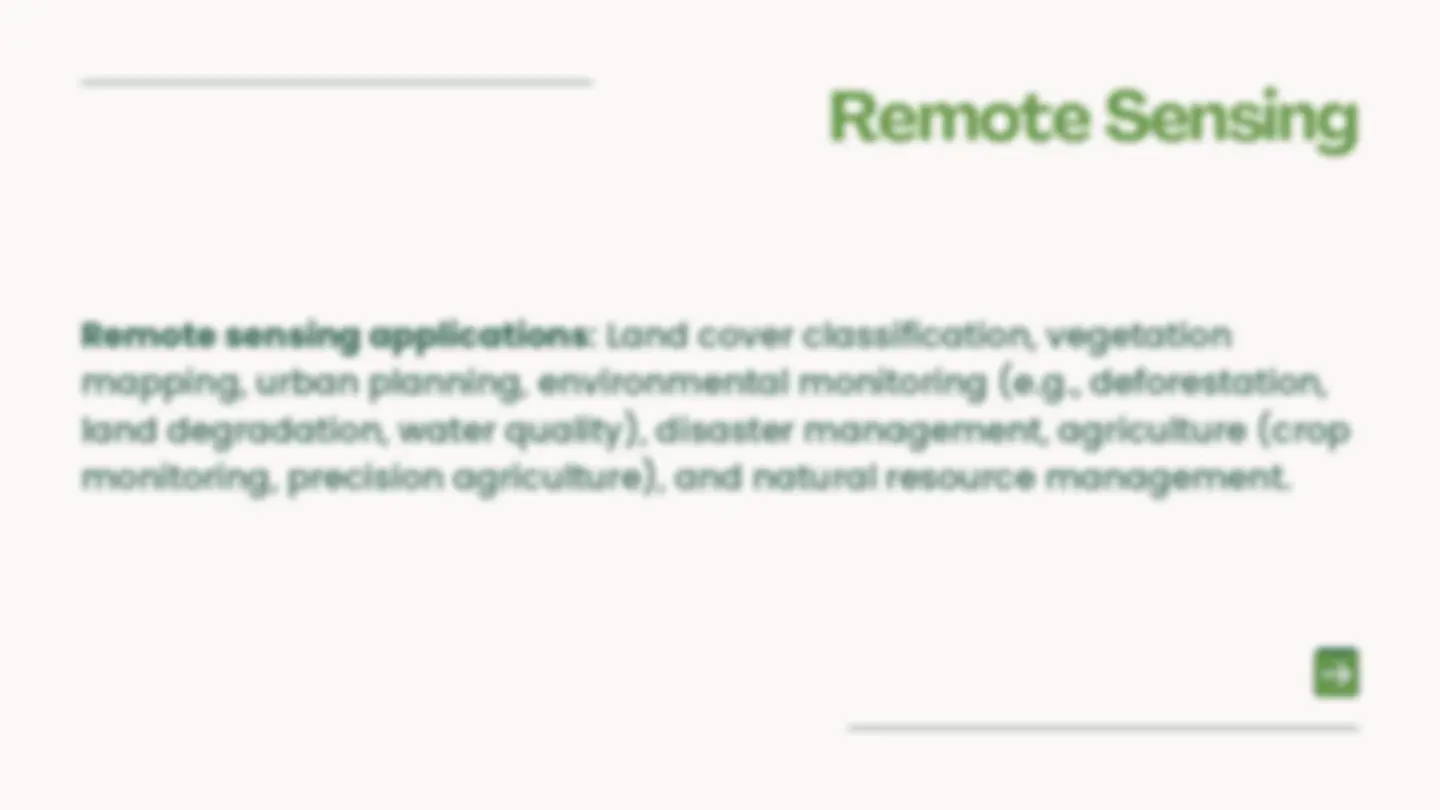
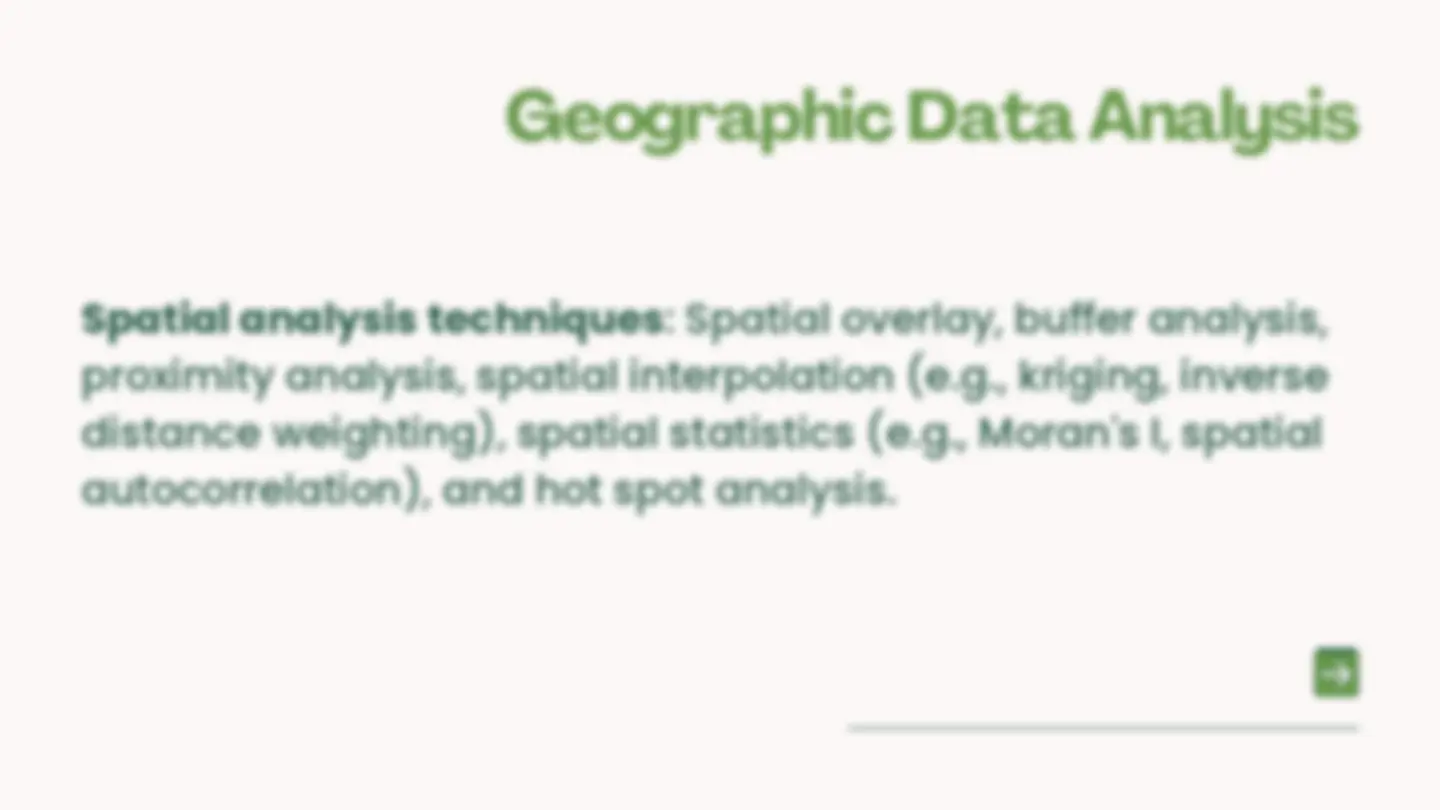
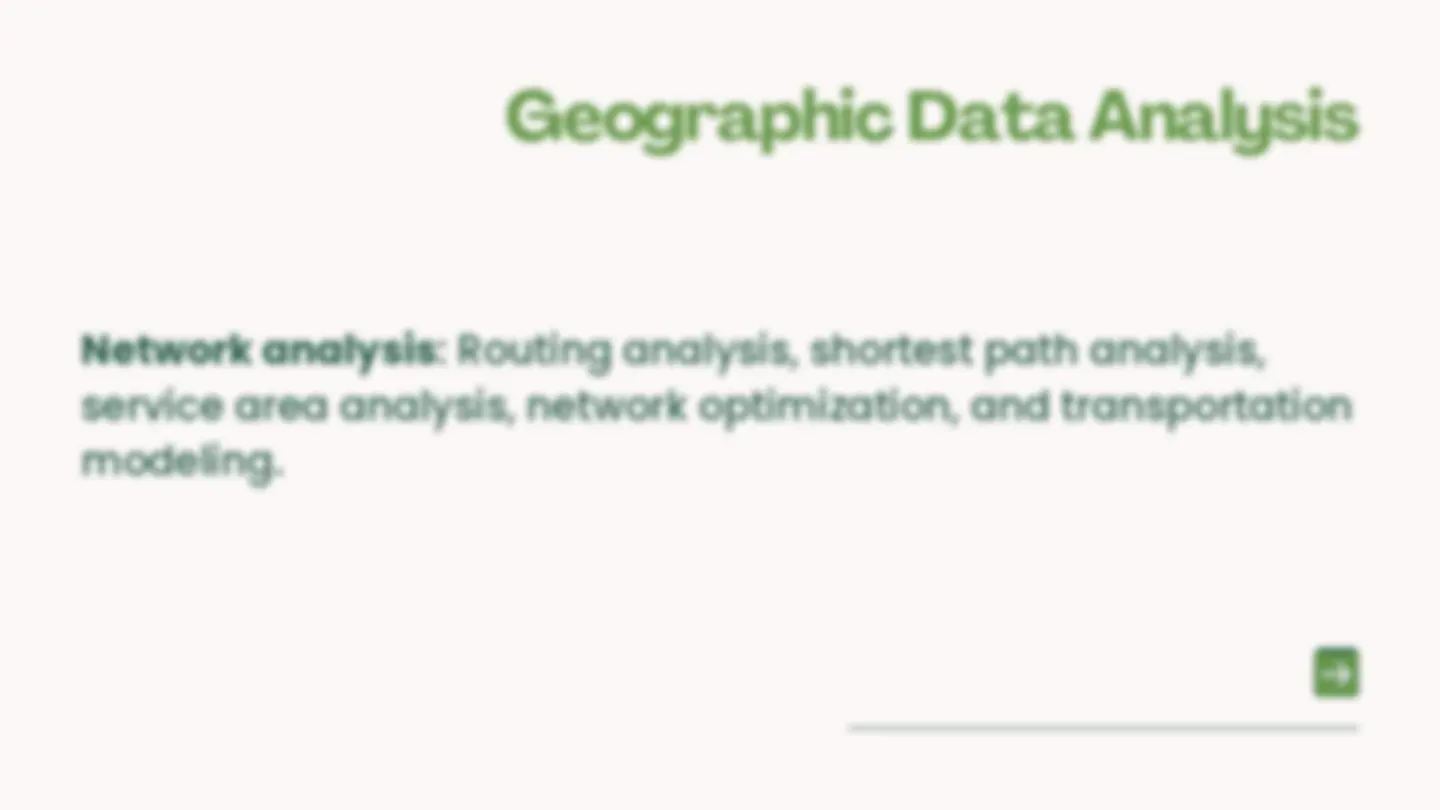
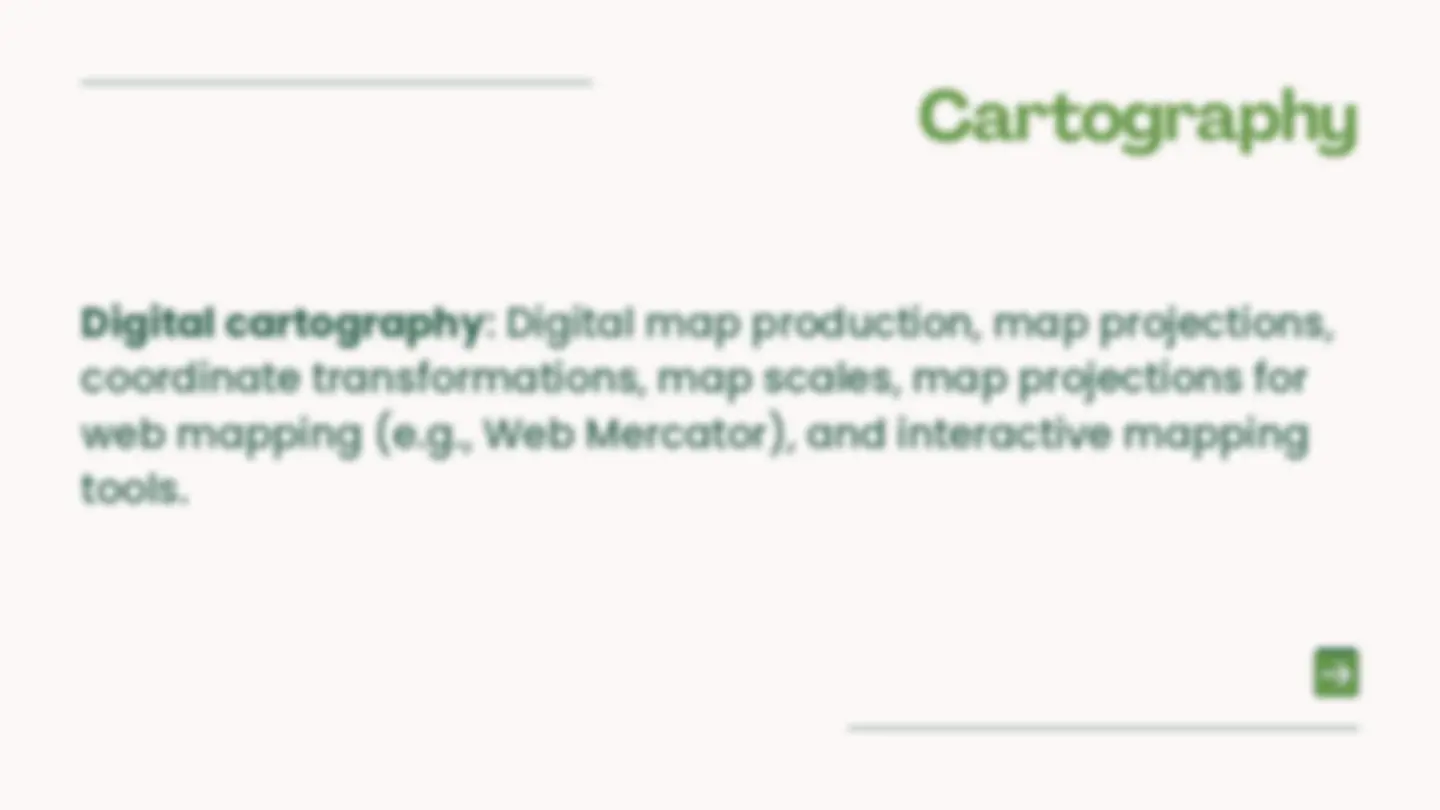
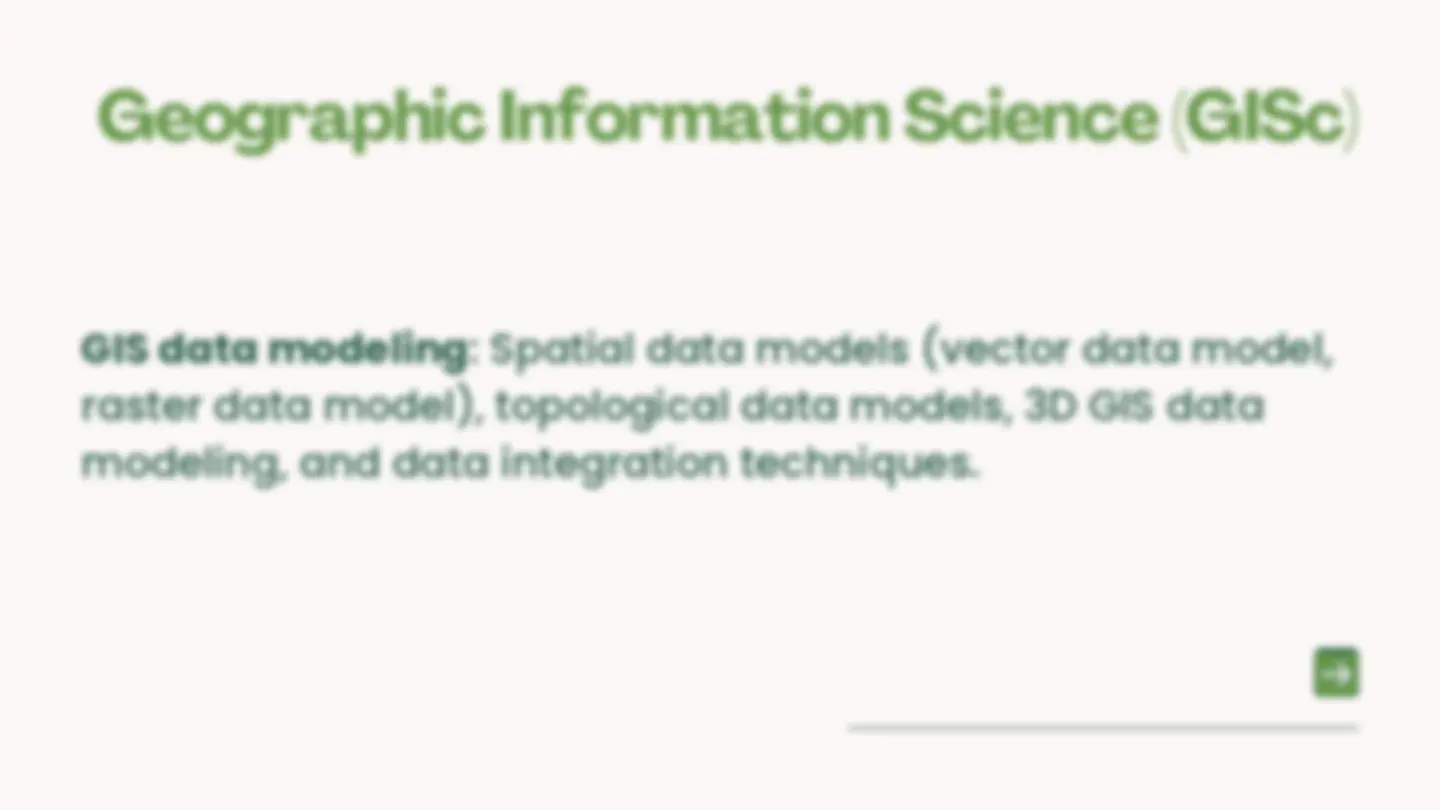
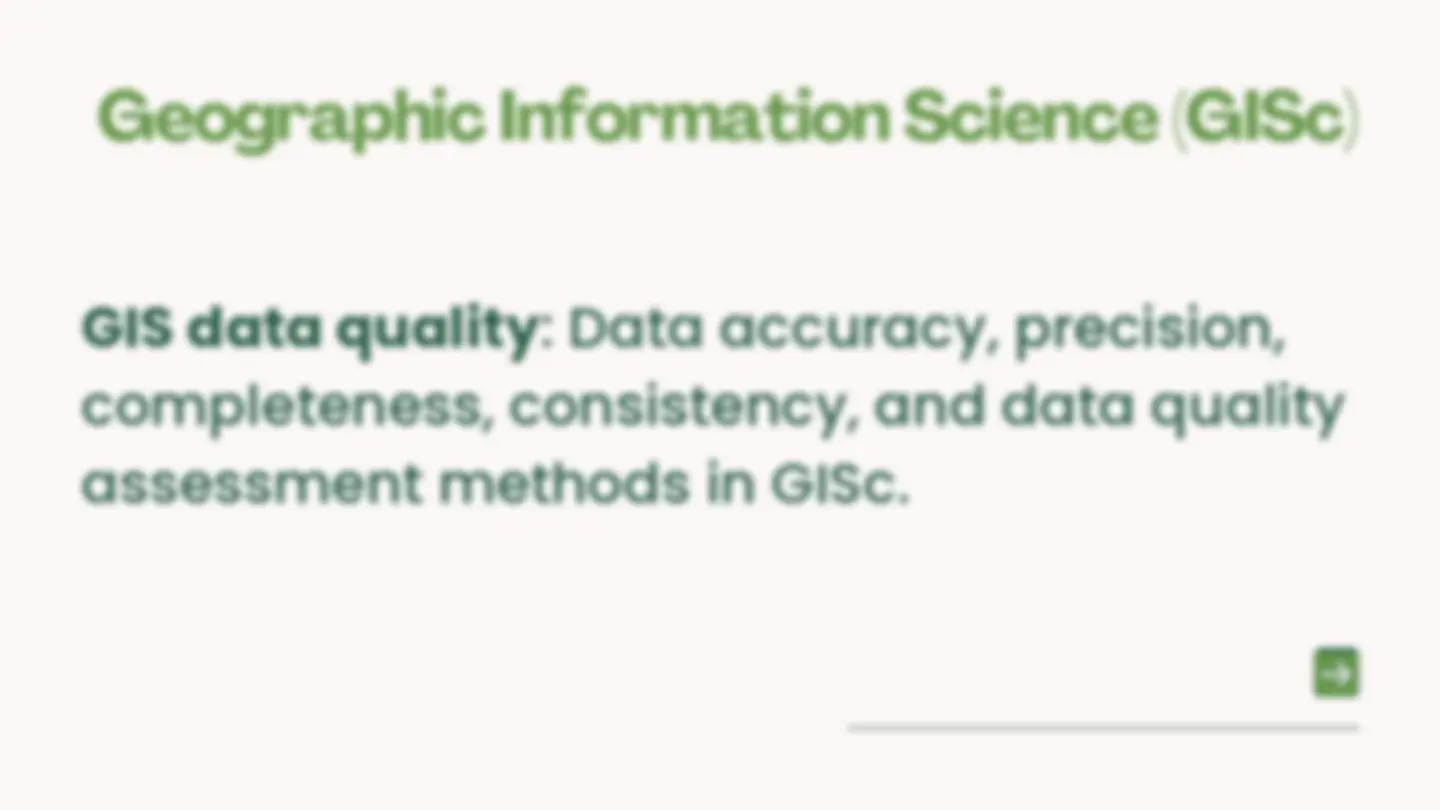
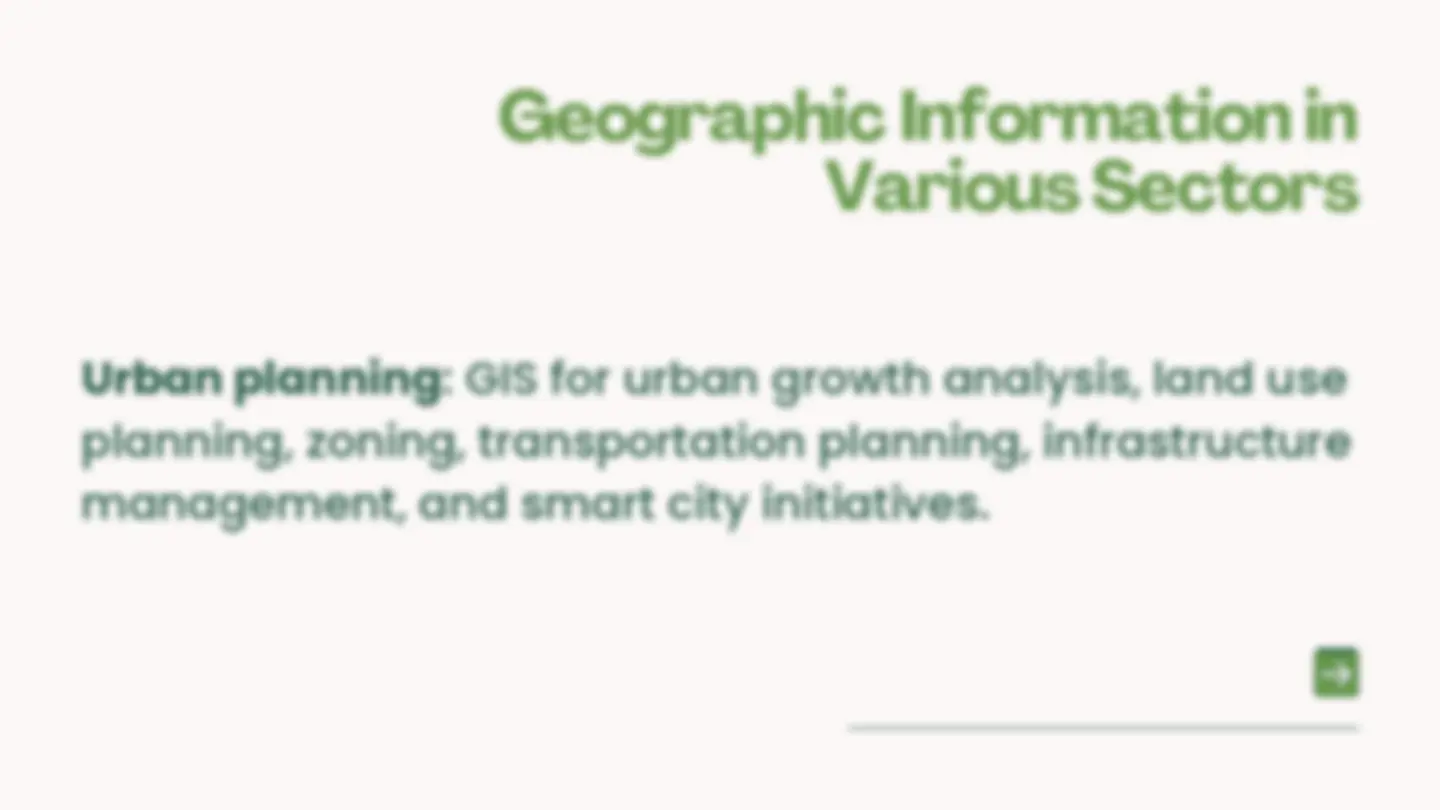

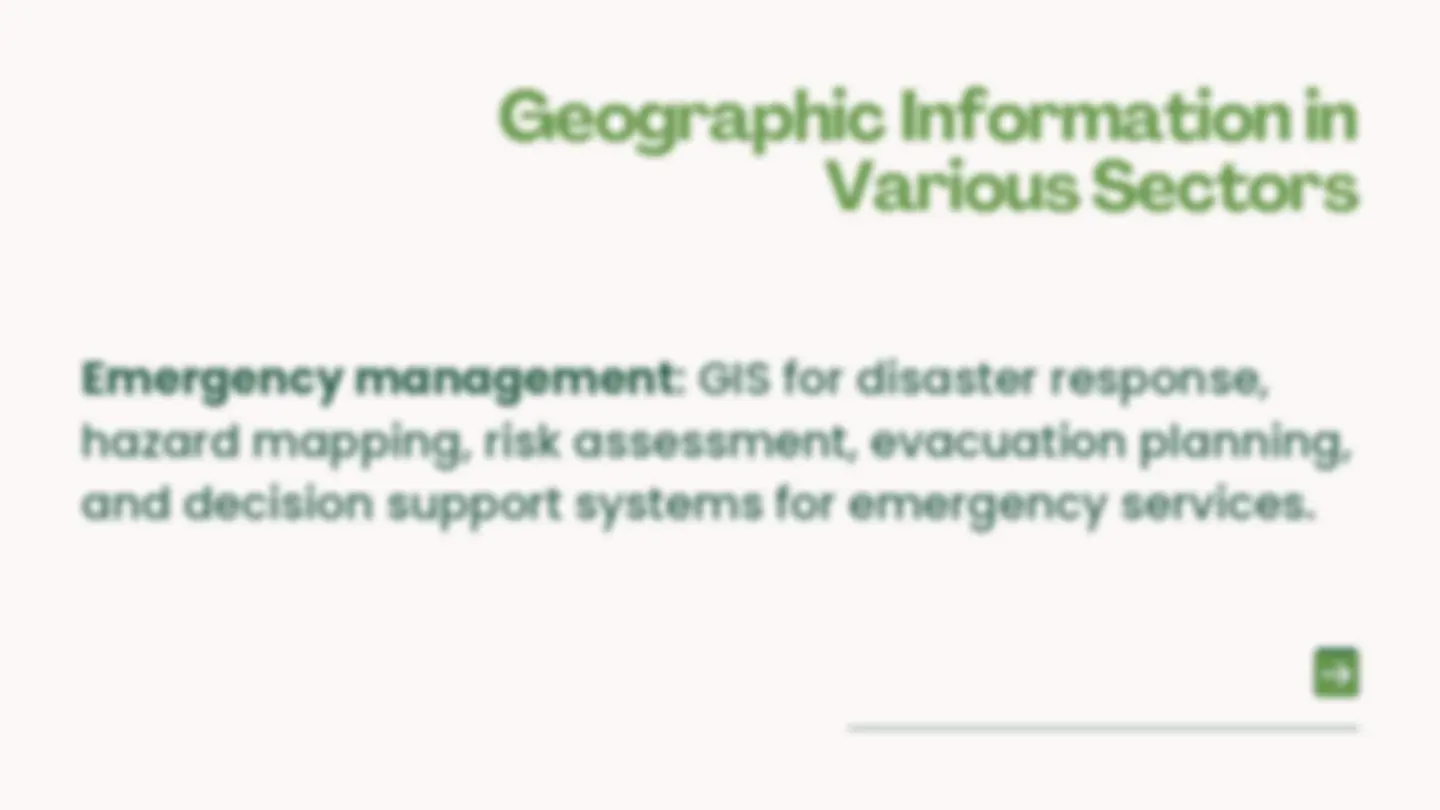
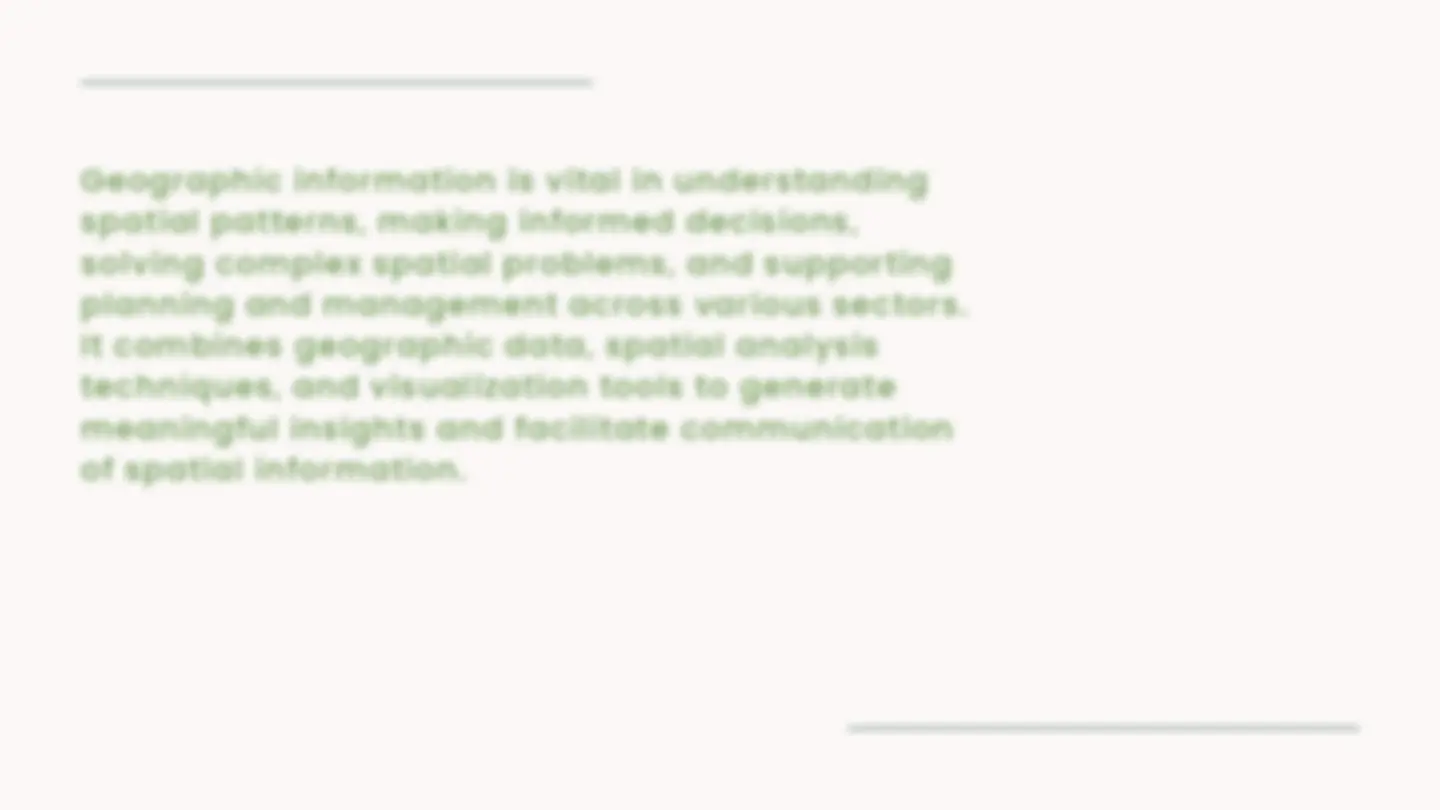



Study with the several resources on Docsity

Earn points by helping other students or get them with a premium plan


Prepare for your exams
Study with the several resources on Docsity

Earn points to download
Earn points by helping other students or get them with a premium plan
Community
Ask the community for help and clear up your study doubts
Discover the best universities in your country according to Docsity users
Free resources
Download our free guides on studying techniques, anxiety management strategies, and thesis advice from Docsity tutors
This presentation explores geographic information systems (GIS) and the use of spatial data to analyze and visualize geographic phenomena.
Typology: Slides
1 / 22

This page cannot be seen from the preview
Don't miss anything!















Presented by: Abigail Atiwag
Geographic information refers to data that describes the geographical features, spatial relationships, and attributes of locations on Earth's surface. It encompasses a wide range of information related to geography, cartography, geospatial analysis, and geographic information systems (GIS). Here are key topics related to geographic information:
Geographic Information Systems (GIS) Spatial data : Types of spatial data (vector data, raster data), geographic coordinates (latitude, longitude), coordinate systems (e.g., WGS84, UTM), and data formats (shapefiles, GeoTIFF, KML).
Geographic Information Systems (GIS) GIS applications : Mapping, spatial analysis, geocoding, georeferencing, spatial interpolation, network analysis, suitability analysis, land use planning, environmental modeling, and decision support systems.
Remote Sensing Remote sensing data : Satellite imagery, aerial photographs, LiDAR (Light Detection and Ranging) data, thermal imaging, multispectral data, hyperspectral data, and radar data.
Remote Sensing Remote sensing applications : Land cover classification, vegetation mapping, urban planning, environmental monitoring (e.g., deforestation, land degradation, water quality), disaster management, agriculture (crop monitoring, precision agriculture), and natural resource management.
Geographic Data Analysis Network analysis : Routing analysis, shortest path analysis, service area analysis, network optimization, and transportation modeling.
Geographic Data Analysis Geostatistics : Variogram analysis, spatial interpolation methods (e.g., ordinary kriging, co-kriging), spatial autocorrelation analysis, and uncertainty analysis in spatial data.
Cartography Digital cartography : Digital map production, map projections, coordinate transformations, map scales, map projections for web mapping (e.g., Web Mercator), and interactive mapping tools.
Geographic Information Science (GISc) GIS data modeling : Spatial data models (vector data model, raster data model), topological data models, 3D GIS data modeling, and data integration techniques.
Geographic Information Science (GISc) Spatial data infrastructure (SDI) : Frameworks for organizing, sharing, and accessing geospatial data (e.g., INSPIRE, National Spatial Data Infrastructure).
Geographic Information in Various Sectors Environmental management : GIS applications in environmental assessment, habitat modeling, conservation planning, natural resource management, and climate change analysis.
Geographic Information in Various Sectors Public health : GIS in disease mapping, epidemiology, healthcare resource allocation, spatial epidemiology, and health risk assessment.
Geographic Information in Various Sectors Emergency management : GIS for disaster response, hazard mapping, risk assessment, evacuation planning, and decision support systems for emergency services.